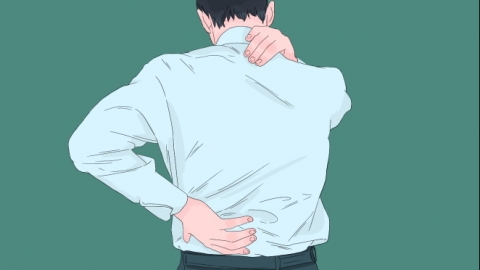What department should you visit for ankylosing spondylitis?
Generally, as a chronic inflammatory disease primarily affecting the spine and sacroiliac joints, ankylosing spondylitis is commonly seen in the following departments: rheumatology and immunology, orthopedics, rehabilitation, pain management, and spinal surgery. Detailed analysis is as follows:

1. Rheumatology and Immunology: Ankylosing spondylitis is an autoimmune disease, and rheumatology and immunology is the first-choice department for initial consultation. Doctors in this department are skilled in confirming the diagnosis through blood tests and imaging examinations. They can also develop standardized treatment plans for long-term anti-inflammatory treatment and immune regulation, helping to control inflammation progression and delay joint deformity.
2. Orthopedics: When the disease progresses to the middle or late stages, with evident spinal or joint deformities, restricted movement, and impact on daily life, patients may visit the orthopedic department. Orthopedic surgeons will assess the severity of the deformity and determine whether surgery is needed to improve joint function, relieve pain, and enhance the patient's quality of life.
3. Rehabilitation: Throughout the treatment process, the rehabilitation department plays an important role. Rehabilitation physicians will develop personalized rehabilitation plans based on the patient's condition, including joint mobility training, posture correction training, and muscle-strengthening exercises. They may also combine physical therapy to relieve pain, maintain joint mobility, prevent muscle atrophy, and help patients regain normal functional abilities.
4. Pain Management: If patients experience unbearable chronic pain that does not respond well to conventional treatments and significantly affects sleep and emotional well-being, they may visit the pain management department. Pain specialists may employ multimodal analgesic approaches, such as nerve blocks, targeted drug therapy, and minimally invasive interventional treatments, to rapidly relieve pain.
5. Spinal Surgery: For patients with severe conditions, such as significant spinal deformities, spinal instability, or concurrent spinal cord compression symptoms, the spinal surgery department is appropriate. Spinal surgeons specialize in surgical treatment of spinal disorders and can perform precise surgical procedures to correct spinal deformities, relieve spinal cord compression, restore spinal stability, and prevent further neurological damage.
Patients should maintain proper standing and sitting postures in daily life, avoid prolonged bending or sitting, engage in appropriate low-intensity exercise, strictly follow medical advice regarding medication, and schedule regular follow-up visits to allow timely adjustments to the treatment plan and better disease management.








